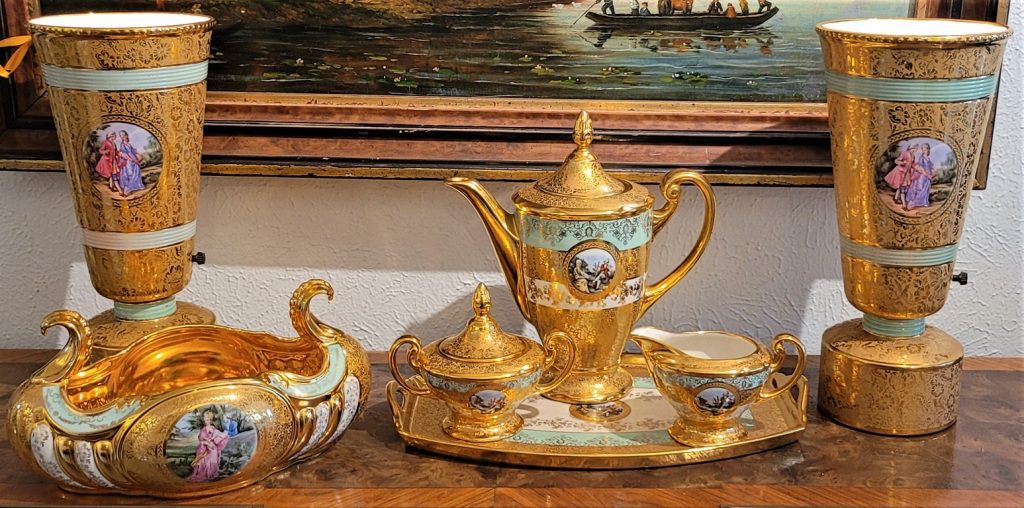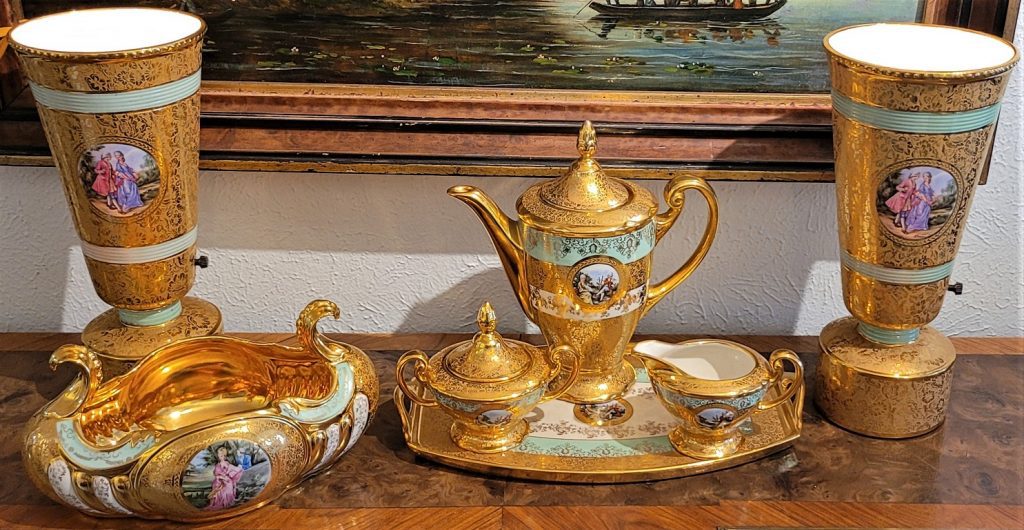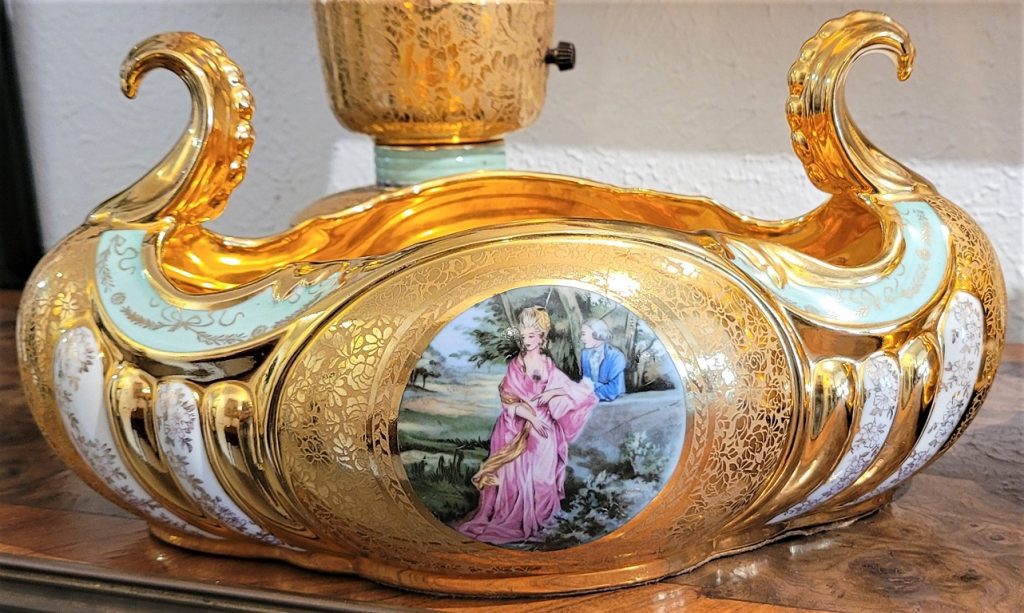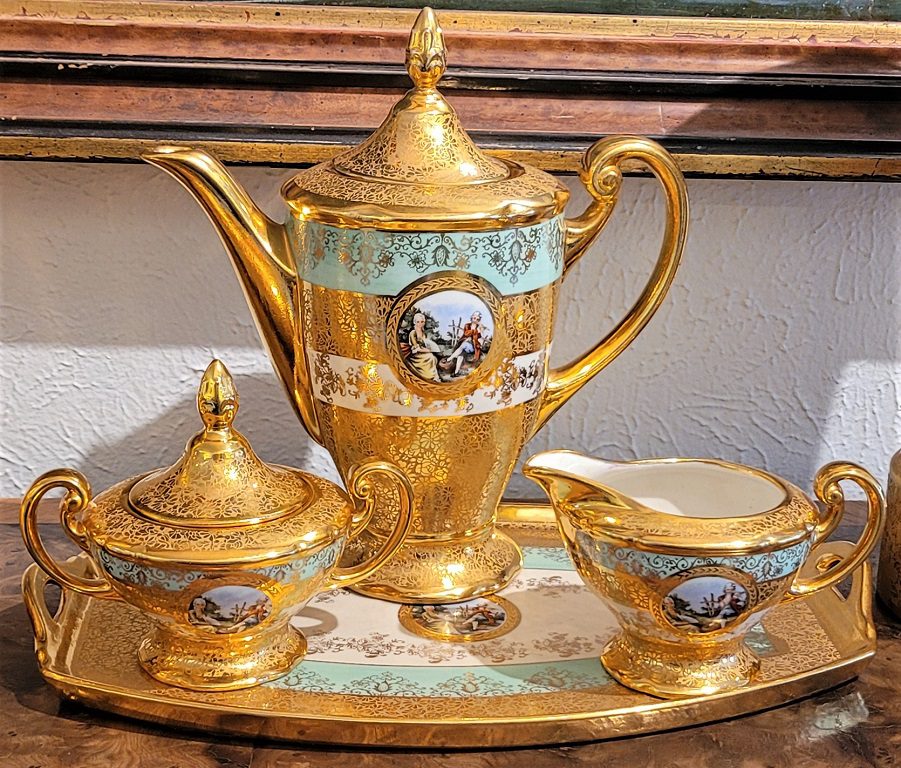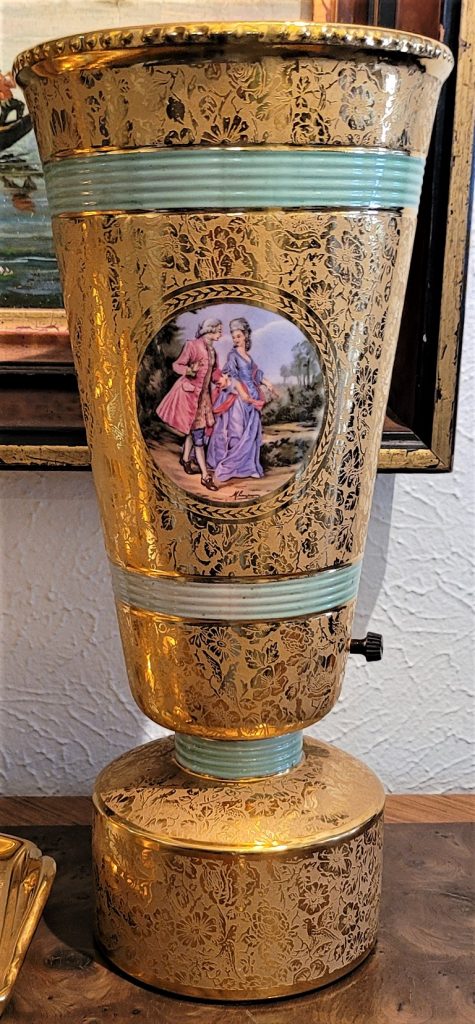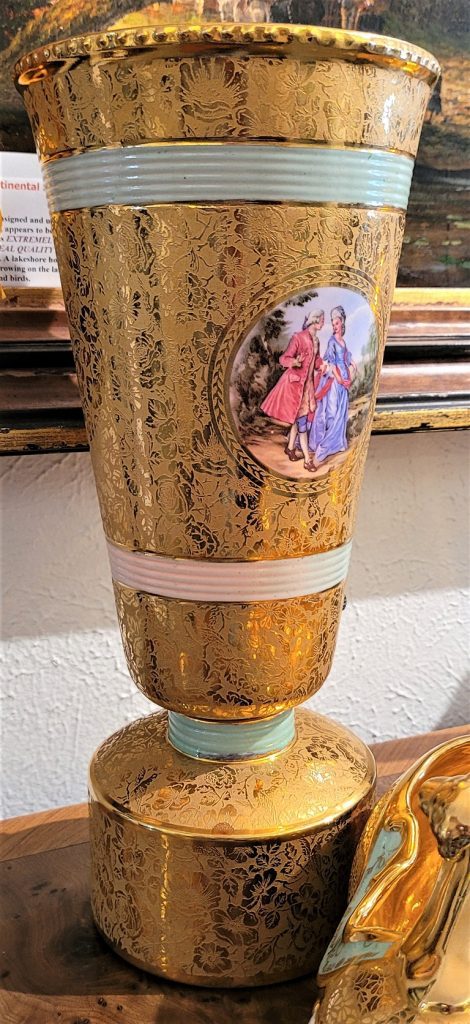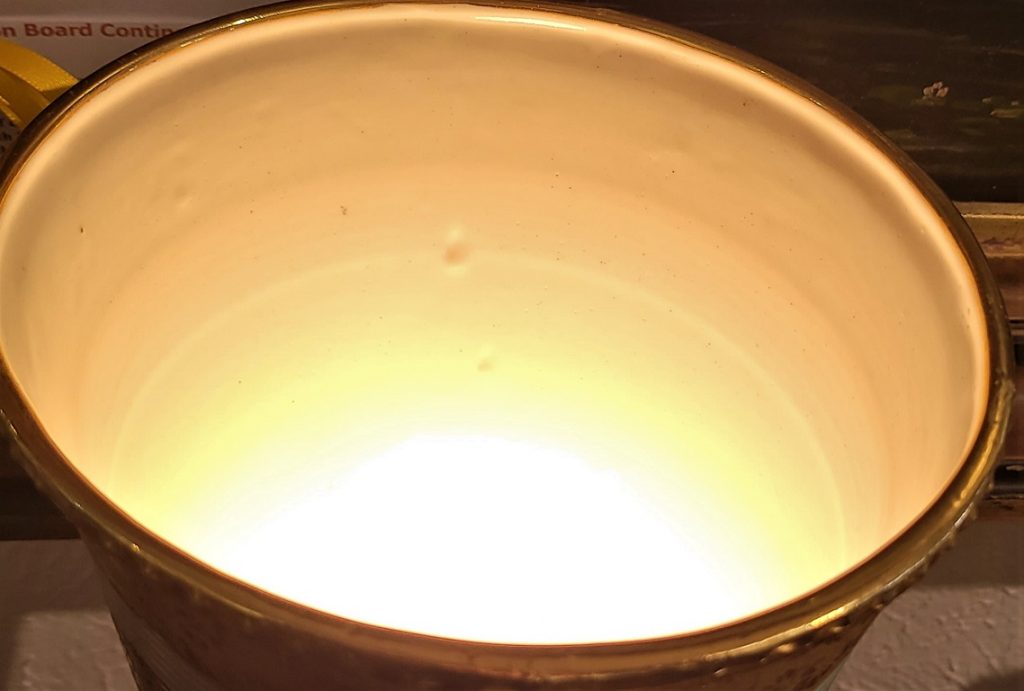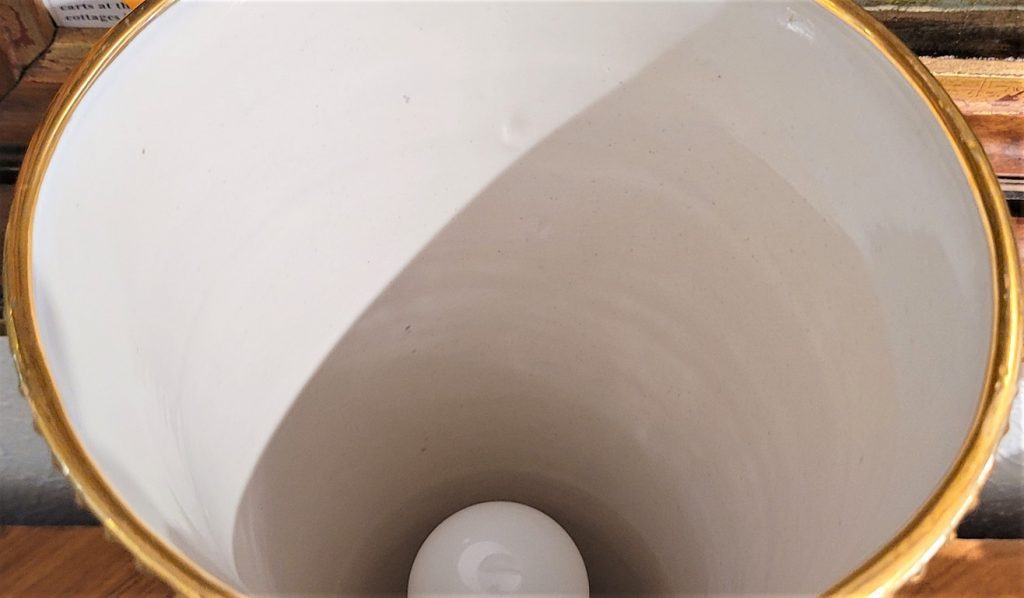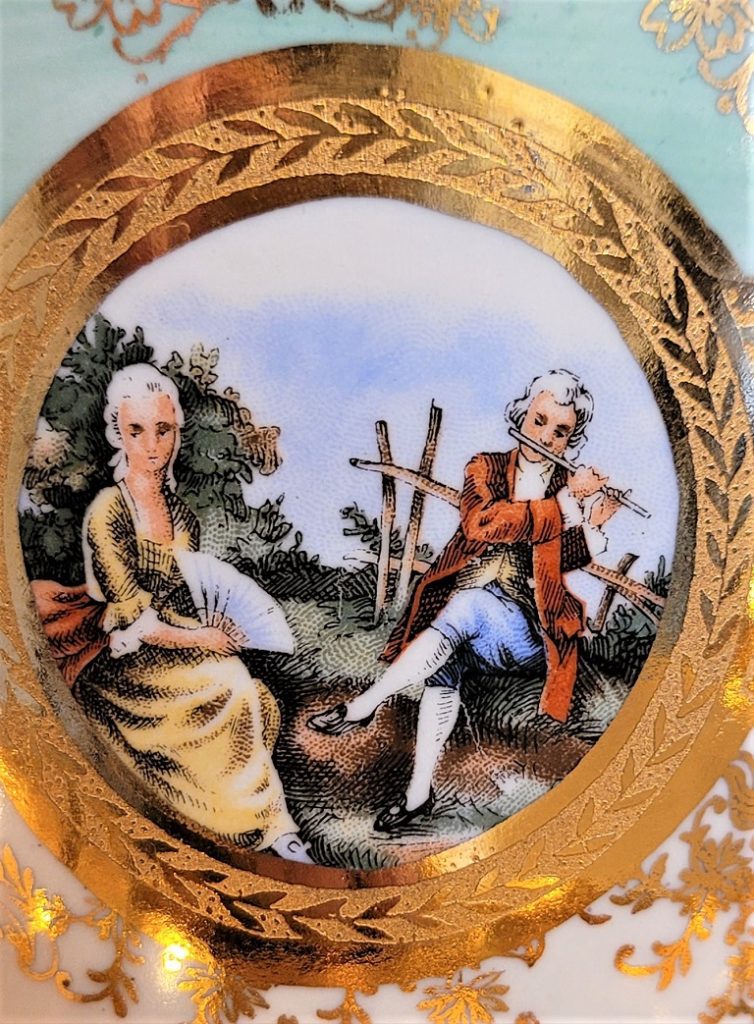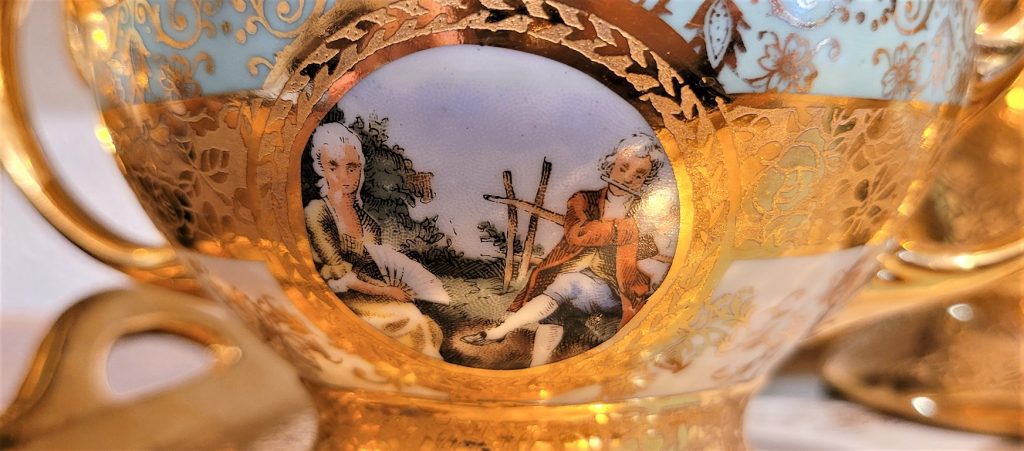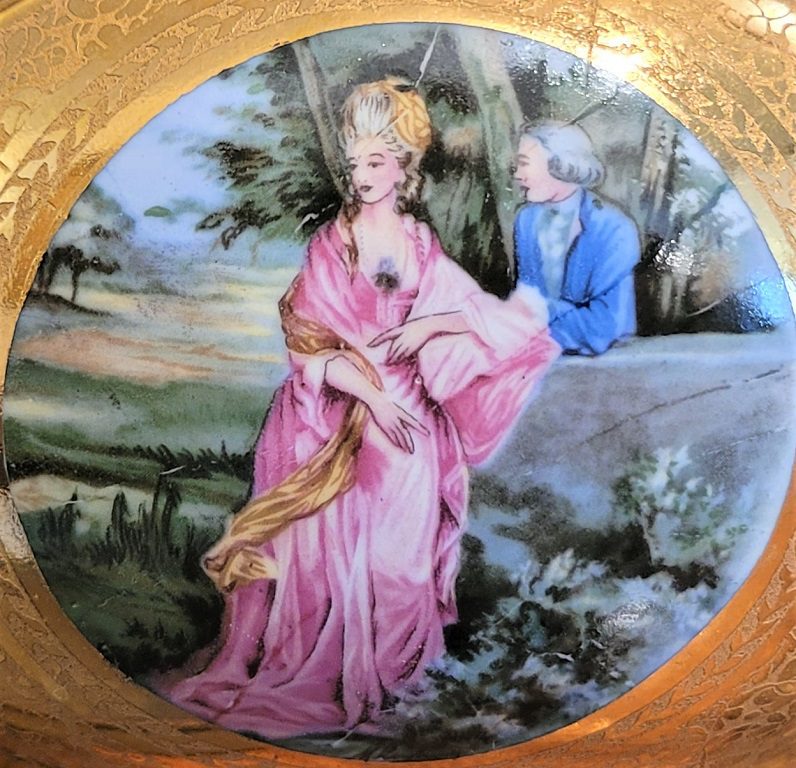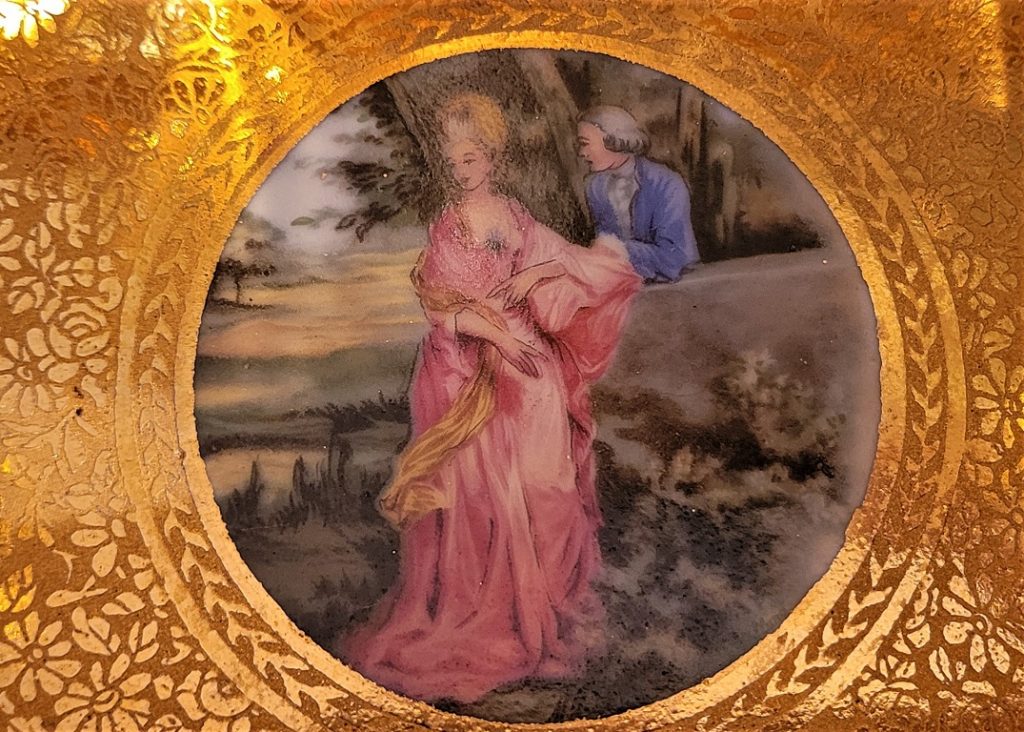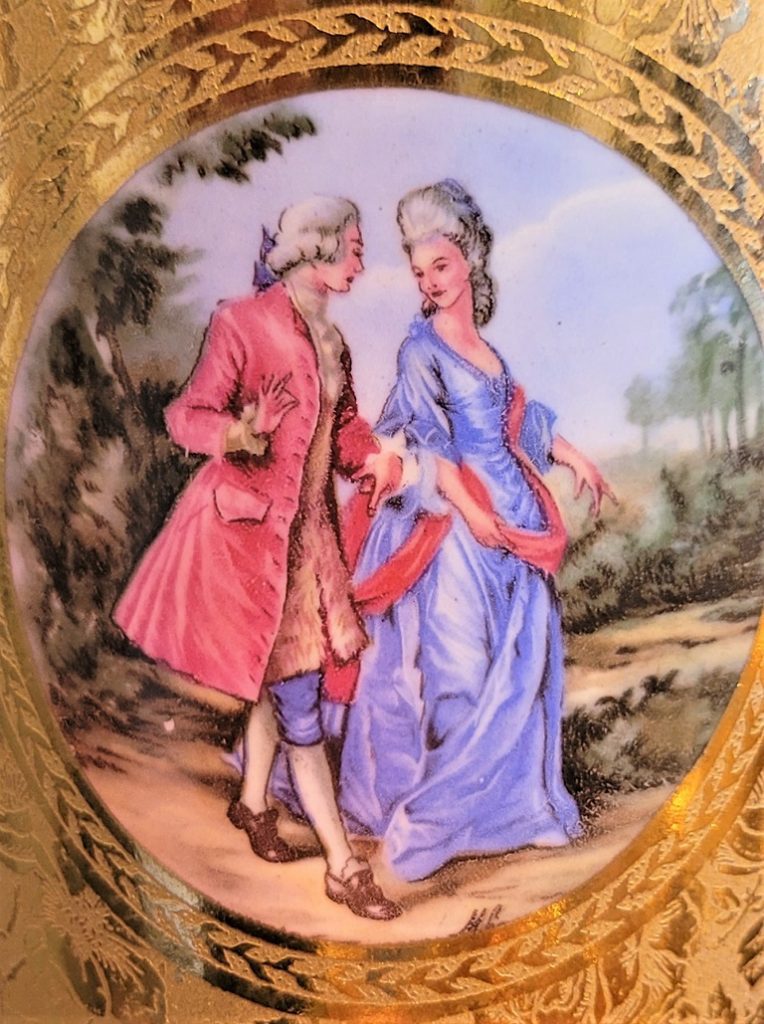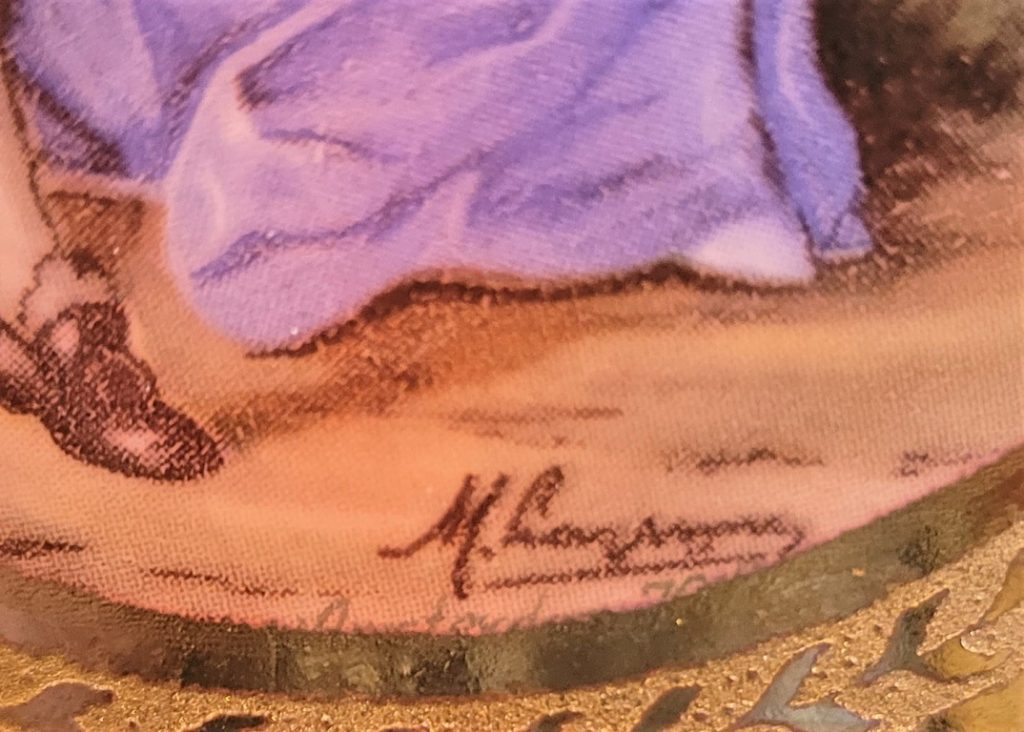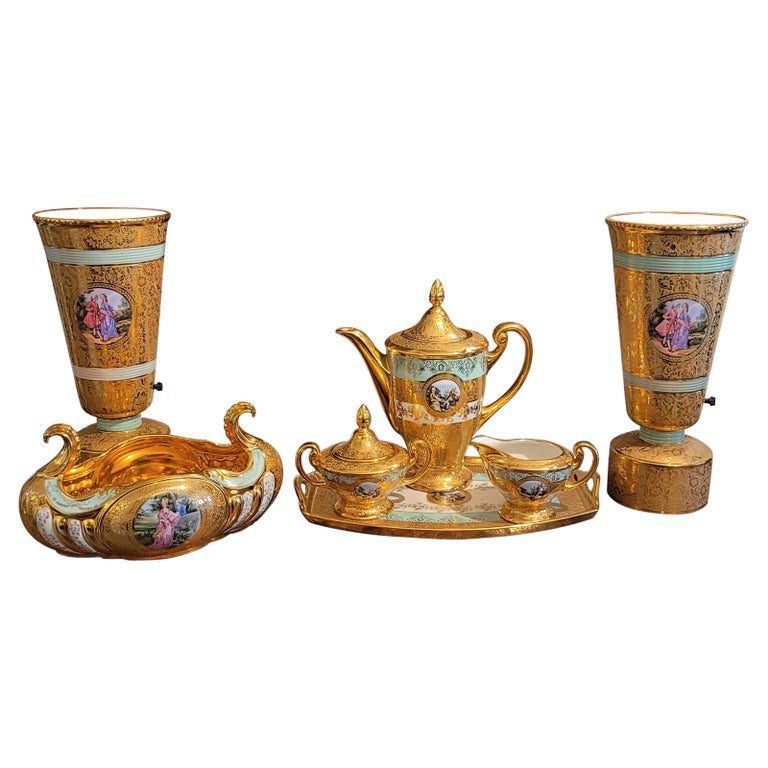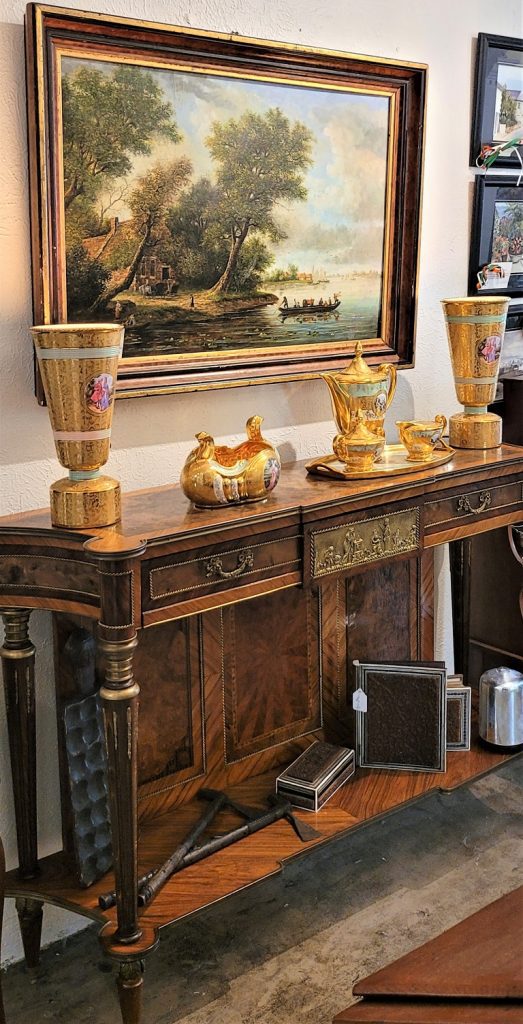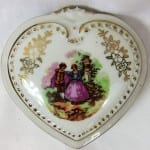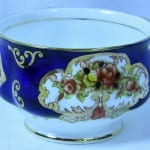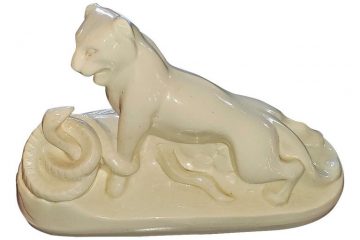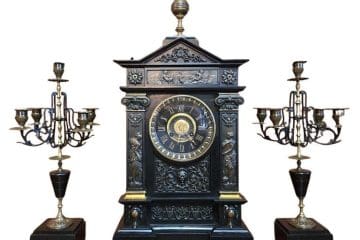Le Mieux 7 Piece 24kt Gold Porcelain Set
PRESENTING a STUNNING Le Mieux 7 Piece 24kt Gold Porcelain Set.
Marked for “Le Mieux China …. 24karat gold … hand decorated”
The Set consists of a Pair of Vase Shaped Uplighter Table Lamps, A serving tray, a Teapot, Sugar Pot and Creamer and a Swan necked Centerpiece Bowl.
Each piece consists of an ivory colored porcelain with teal sections, hand painted/decorated medallions featuring classical Louis XVI Scenes and heavy decorated with 24 karat gold applique with floral backgrounds.
A fabulous survivor from circa 1935-39. Made in France, probably Limoges.
One of the medallions (on the lamp on the right) is signed but we cannot decypher the signature. … it looks like M. Laazernes (?) and underneath is later inscribed with what looks like, “Amsterdam 70–“.
Not much is known or recorded about the ‘Le Mieux Factory’. It is believed that the Le Mieux Factory was located in the Limoges Region of France and was destroyed in WWII as most other examples of their wares which have appeared on the market date pre 1939.
Limoges French: [limɔʒ] (listen); Occitan: Lemòtges, locally Limòtges [liˈmɔdzes]) is a city and commune, is the capital of the Haute-Vienne department and was the administrative capital of the former Limousin region in west-central France. Situated on the first western foothills of the Massif Central, Limoges is crossed by the Vienne River, of which it was originally the first ford crossing point.
The second most populated town in the New Aquitaine region after Bordeaux, a university town, an administrative centre and intermediate services with all the facilities of a regional metropolis, it has an urban area of 283,557 inhabitants in 2016, making it the sixth largest in South-West France and the 38th in the whole country. The inhabitants of the city are called the Limougeauds.
Founded around 10 BC under the name of Augustoritum, it became an important Gallo-Roman city. During the Middle Ages Limoges became a large city, strongly marked by the cultural influence of the Abbey of Saint-Martial, where the Dukes of Aquitaine were invested and crowned. From the 12th century onwards, its enamels were exported throughout the Christian world. In 1765, during the industrial revolution, the discovery of a deposit of kaolin in the Saint-Yrieix-la-Perche region enabled the development of the Limoges porcelain industry, which would make Limoges world-famous. Sometimes nicknamed “the red city” or “the Rome of socialism” because of its tradition of voting on the left and the workers’ events it experienced from the 19th to the beginning of the 20th century.
Since the 1990s, the city has also been associated with its basketball club, Limoges CSP, which has won several French championships and the European championship in 1993. Because of its heritage policy, it has held the label “City of Art and History” since 2008. A city with a tradition of butchery, home to one of the world leaders in electrical equipment for the building industry, it is also well positioned in the luxury goods industry. Known and recognised as the “capital of the arts of fire” because of the ever-present presence of the great porcelain houses, its art workshops working with enamel or stained glass. This specificity has led it to join the UNESCO Creative Cities Network in 2017 in the thematic category “Crafts and Popular Arts”.
Link: https://en.wikipedia.org/wiki/Limoges
Le Mieux 7 Piece 24kt Gold Porcelain Set.
Provenance: From a Private Texas Collection.
Condition: Near Mint.
Dimensions: Each Lamp is 14.4 inches Tall with a top diameter of 6.5 inches
The Swan Necked Centerpiece is 6 inches Tall, 11.5 inches Wide and 8 inches Deep
The Teapot is 11.5 inches tall, 10 inches wide and 5.5 inches deep
The Sugar Bowl is 5.25 inches tall, 6.5 inches wide and 4.75 inches deep
The Creamer is 3.75 inches tall, 6 inches wide and 4.25 inches deep
The Tray is 1.4 inches tall, 15.5 inches wide and 9.5 inches deep.
SALE PRICE NOW: $2,850 (Set)
